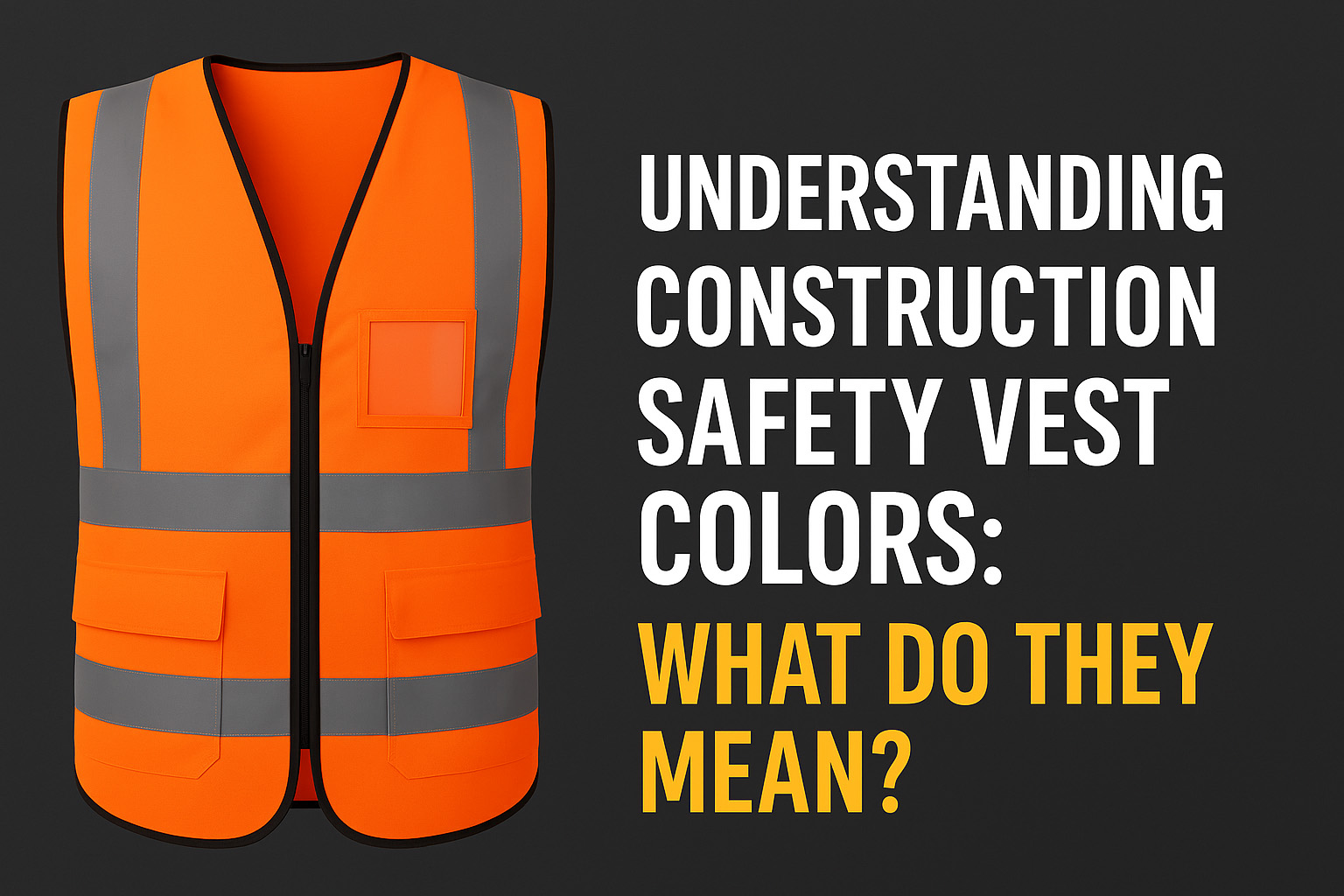When you step onto a construction site, one of the first things you notice is the sea of colorful safety vests. These aren’t just fashion statements or standard-issue uniforms; they serve a vital purpose in maintaining safety, organization, and communication on busy job sites. Each color has a specific meaning and is often tied to a particular role. In this blog, we’ll break down the color coding system for safety vests and what each one typically represents.
Why Color-Coded Safety Vests Matter
Construction zones are high-risk environments with heavy machinery, noise, and many moving parts. Safety vests are designed to make individuals highly visible to prevent accidents. The color of a vest adds another layer of clarity, helping team members and supervisors quickly identify who is who on the site.
Common Safety Vest Colors and Their Meanings
- Fluorescent Yellow-Green
- Typical Roles: General laborers, traffic controllers, site visitors
- Why It’s Used: This color is one of the most visible in daylight and low-light conditions. It stands out particularly well against most backgrounds, making it ideal for workers who are constantly on the move.
- Orange
- Typical Roles: Road crews, heavy equipment operators, flaggers
- Why It’s Used: Orange is another highly visible color that contrasts well with natural environments like grass and trees. It’s commonly seen in roadwork zones and high-traffic areas.
- Red
- Typical Roles: Fire marshals, emergency responders, safety supervisors
- Why It’s Used: Red signifies urgency and caution. It is often used to denote roles that are critical during emergencies.
- Blue
- Typical Roles: Electricians, technical advisors, specialized workers
- Why It’s Used: Blue is less common but used for specialized roles to distinguish them from general labor.
- Green
- Typical Roles: Safety officers, first aid personnel
- Why It’s Used: Green is associated with health and safety, making it a natural fit for medical or safety-specific roles.
- White
- Typical Roles: Site managers, engineers, supervisors
- Why It’s Used: White vests are often reserved for higher-level personnel who need to be quickly identifiable on site.
- Black
- Typical Roles: Visitors, specialized roles (rare usage)
- Why It’s Used: Black is used less frequently due to lower visibility but can denote VIPs or specialized, low-risk roles.
Conclusion
Color-coded safety vests are a simple yet effective way to ensure everyone on a construction site knows who is who. By following this visual system, teams can operate more efficiently and respond faster in case of emergencies. So, next time you see a brightly colored vest, remember – it’s more than just a piece of clothing; it’s a key part of site safety and communication.
Stay safe and stay seen!



